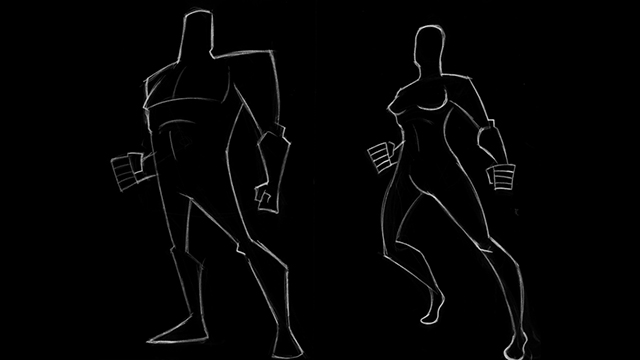In a project written for SFMOMA’s Open Studio series, artist Amy Fraceschini proposes an action: create a superhero identity, costume and symbol. Next, interview people in your school or community about the issues they face. Collaborate with your fellow superheros to get into character and perform a task that addresses this issue or creates a dialogue about it. The parameters of this project are loose, but the main point is to develop an idea or create a collaborative action for the common good that brings a solution or awareness to a community issue. For inspiration, watch this animation of Amy Franceschini and then tell us what you could do to save the day like a true superhero.
Franceschini works collaboratively with her fellow “Futurefarmers,” a group of international artists, bakers, architects and other builders. Together, they learn new things and make art that encourages dialogue and exchange. Her practice spans drawing, sculpture, design, net art, public art, and gardening. She is concerned with notions of community, sustainable environment, and the relations between humans and nature.
Resource
VIDEO: Make Your Own Superhero with Amy Franceschini (KQED Art School)
Hit the streets as your own, custom-made Superhero and work for the common good of your city! Artist Amy Franceschini has fashioned an inspiring lesson that will help guide you through the entire process from brainstorming logos, mottos and costumes to ensuring that your Superhero works to help solve a community’s needs.
To respond to the Do Now, you can comment below or tweet your response. Be sure to begin your tweet with @KQEDedspace and end it with #DoNowShape
For more info on how to use Twitter, click here.
We encourage students to reply to other people’s tweets to foster more of a conversation. Also, if students tweet their personal opinions, ask them to support their ideas with links to interesting/credible articles online (adding a nice research component) or retweet other people’s ideas that they agree/disagree/find amusing. We also value student-produced media linked to their tweets. You can visit our video tutorials that showcase how to use several web-based production tools. Of course, do as you can… and any contribution is most welcomed.
More Resources
VIDEO: Collaborative Art with Amy Franceschini (KQED Art School)
Amy Franceschini is a San Francisco based artist whose practice spans drawing, sculpture, design, net art, public art, and gardening. She is concerned with notions of community, sustainable environment, and the relations between humans and nature.
LESSON: Superhero (SFMOMA)
This assignment uses the structure of the superhero teams Justice League and Super Friends to create individual superheroes who will work together to achieve a common good.
RESOURCE: Futurefarmers website (Futurefarmers)
Futurefarmers is a group of diverse practitioners aligned through an interest in making work that is relevant to the time and place surrounding us.
VIDEO: Elements of Art: Form (KQED Art School)
Study up on the different ways visual artists create Form in the third installment of our Elements of Art series. Through the eye-fooling genre of Trompe L’oeil, we look at techniques artists use to transform shapes into form.
VIDEO: Amy Franceschini (KQED Spark)
In this video, Franceschini discusses a project where a scanner takes an image of a participant’s print, which is then modeled into a virtual, three-dimensional maze and projected onto a wall. The participant can then enter into the labyrinth of his or her own fingerprint as though it were a topiary maze.
